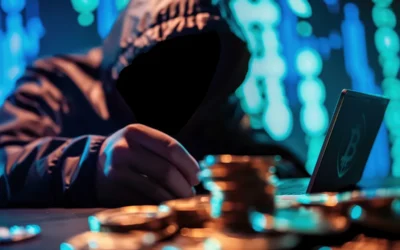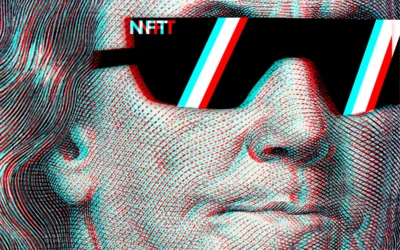Cryptocurrency has exploded into the mainstream, with Bitcoin, Ethereum, and a host of other digital assets capturing the attention of investors, tech enthusiasts, and even governments. But for many, the world of cryptocurrency can seem intimidating and complex. We aim to break down the basics of cryptocurrency, focusing on how to get started with two of the most popular digital currencies: Bitcoin and Ethereum.
What is Cryptocurrency?
At its core, cryptocurrency is a digital or virtual form of money that uses cryptography for security. Unlike traditional currencies (fiat money like dollars, euros, or yen), cryptocurrencies operate on decentralized networks based on blockchain technology. This means they are not controlled by any central authority, like a government or bank.
The key elements of cryptocurrency are:
- Decentralization: Cryptocurrencies are typically built on blockchain, a decentralized ledger that records all transactions across a network of computers. This makes the system more transparent and secure.
- Security: Cryptocurrencies use advanced cryptography to secure transactions, control the creation of new units, and verify the transfer of assets.
- Global: Cryptocurrencies can be sent and received across borders without the need for intermediaries or the constraints of traditional banking systems.
Bitcoin and Ethereum are two of the most well-known and widely used cryptocurrencies, and they serve as a good starting point for anyone new to this space.
Getting Started with Bitcoin and Ethereum
1. Understanding the Basics of Bitcoin and Ethereum
Bitcoin was the first cryptocurrency, created in 2009 by an unknown person or group of people using the pseudonym Satoshi Nakamoto. Bitcoin is often referred to as “digital gold” because it was designed as a store of value and a way to transfer wealth securely across the internet without intermediaries. There will only ever be 21 million Bitcoins, which creates scarcity and drives its value.
Ethereum, on the other hand, was launched in 2015 by Vitalik Buterin and others. While it functions as a cryptocurrency, Ethereum is more than just digital money. It is a decentralized platform that enables developers to build and run smart contracts—self-executing contracts with the terms of the agreement directly written into code. This makes Ethereum the backbone for a variety of decentralized applications (dApps), NFTs, and decentralized finance (DeFi) platforms.
2. Setting Up a Cryptocurrency Wallet
Before you can buy Bitcoin or Ethereum, you’ll need a wallet to store your digital assets. A cryptocurrency wallet is a software or hardware device that allows you to store, send, and receive cryptocurrencies. There are several types of wallets, each with varying degrees of security and ease of use:
- Software Wallets (Hot Wallets): These are apps or browser extensions that store your crypto online. Popular examples include:
- MetaMask: A popular Ethereum wallet that also supports other cryptocurrencies.
- Exodus: A beginner-friendly wallet that supports multiple cryptocurrencies, including Bitcoin and Ethereum.
Software wallets are convenient but more vulnerable to hacking because they are connected to the internet.
- Hardware Wallets (Cold Wallets): These are physical devices, like USB drives, that store your crypto offline. Examples include:
- Ledger Nano S/X
- Trezor One
- Tangem (save 10$ and ty for supporting us!)
Hardware wallets are more secure since they store your private keys offline, but they require a physical device to access your funds.
- Exchange Wallets: Many exchanges like Coinbase, Binance, and Kraken offer wallets directly on their platforms. While these wallets are convenient, they can be less secure because you don’t fully control the private keys (the exchange does). It’s generally recommended to move your funds to a private wallet for long-term storage.
3. Buying Bitcoin and Ethereum
Once you have your wallet set up, you’re ready to buy your first cryptocurrency. Here’s our simple step-by-step guide to purchasing Bitcoin and Ethereum:
Step 1: Choose a Cryptocurrency Exchange
Exchanges are platforms where you can buy, sell, and trade cryptocurrencies. Some of the most popular and reputable exchanges include:
- Coinbase: A user-friendly exchange ideal for beginners.
- Binance: Offers a wide range of cryptocurrencies with advanced trading features.
- Kraken: Known for its robust security features.
When choosing an exchange, make sure it supports the cryptocurrencies you want to buy, and verify that it operates in your country.
Step 2: Register and Verify Your Identity
Most exchanges require you to sign up and complete a verification process known as KYC (Know Your Customer). This involves providing your identification documents (e.g., a passport or driver’s license) and sometimes a proof of address.
Step 3: Deposit Funds
Once your account is verified, you’ll need to deposit funds. Many exchanges allow you to deposit fiat currencies (USD, EUR, GBP, etc.) via bank transfer, debit card, or credit card. Some exchanges also support PayPal or other digital payment options.
Step 4: Buy Bitcoin or Ethereum
After your funds are deposited, navigate to the trading section of the exchange and select the cryptocurrency you wish to buy. You can purchase Bitcoin (BTC) or Ethereum (ETH) by entering the amount of fiat currency (e.g., $100) or cryptocurrency you want to buy. Review the transaction details and confirm the purchase.
Step 5: Transfer to Your Wallet
For added security, it’s recommended to transfer your newly purchased Bitcoin or Ethereum from the exchange to your private wallet. To do this, copy your wallet’s public address, return to the exchange, and initiate the withdrawal process.
4. Securing Your Investments
Security is one of the most critical aspects of managing cryptocurrencies. Here are some best practices to keep your investments safe:
- Enable Two-Factor Authentication (2FA): Always enable 2FA on your exchange and wallet accounts. This adds an extra layer of security by requiring a second form of authentication, typically a code generated by an app like Google Authenticator.
- Backup Your Wallet: If you’re using a software or hardware wallet, make sure to write down your recovery seed phrase—a set of 12-24 random words used to restore your wallet in case it’s lost or damaged. Store this in a secure, offline location.
- Beware of Phishing and Scams: Be cautious of phishing emails or websites that imitate legitimate exchanges or wallets. Never share your private keys or recovery seed phrase with anyone, and avoid clicking on suspicious links.
Use Cold Storage for Long-Term Holdings: If you’re holding a large amount of cryptocurrency or “bags” for an extended period, consider using a hardware wallet to keep it offline and safe from online threats.
5. Staying Informed
The world of cryptocurrency is constantly evolving, and staying informed is crucial for making sound investment decisions. Follow reputable news sources, join crypto communities (like Reddit, Telegram, or Twitter), and educate yourself on new developments like blockchain technology upgrades, regulations, and market trends.
Conclusion
Entering the world of cryptocurrency might feel like stepping into the unknown, but we can assure you, it’s a journey well worth taking. We’ve both been where you are now: curious, perhaps a bit overwhelmed, and wondering where to start. Just like you, we had our first wallets, our first purchases of Bitcoin and Ethereum, and our share of questions about how everything worked.
What we learned early on is that cryptocurrency isn’t just about financial investment… it’s about embracing a new way of thinking, a shift towards decentralization, and a technology that empowers individuals. It’s a learning process, and you don’t have to figure it all out at once. Start small. Step by step. Take the time to understand the basics, and most importantly, secure your assets and approach each step carefully. As you grow more comfortable, you’ll realize that cryptocurrency is more than just coins and tokens, it’s a community, a movement, and a gateway to the future of finance and technology.
One thing we both believe in is the power of staying informed. Cryptocurrency is constantly evolving, and the landscape is rich with new opportunities and ideas. Whether it’s through news articles, social media, or forums, make sure you keep your finger on the pulse. By doing so, you’ll discover that this journey is not just about the dollars (or Bitcoin) in your wallet. It’s about being part of a revolution that’s reshaping the way the world thinks about money, ownership, and technology.
We’re excited for you to take these first steps into the world of cryptocurrency. Remember: this isn’t a race. Each step, no matter how small, is progress. By starting with Bitcoin and Ethereum, you’re laying the foundation for deeper exploration into blockchain technology and decentralized finance. So, keep an open mind, stay curious, and most of all… have fun with it! You’re at the beginning of something super cool.
Ty,
Team #CodeIsLaw















